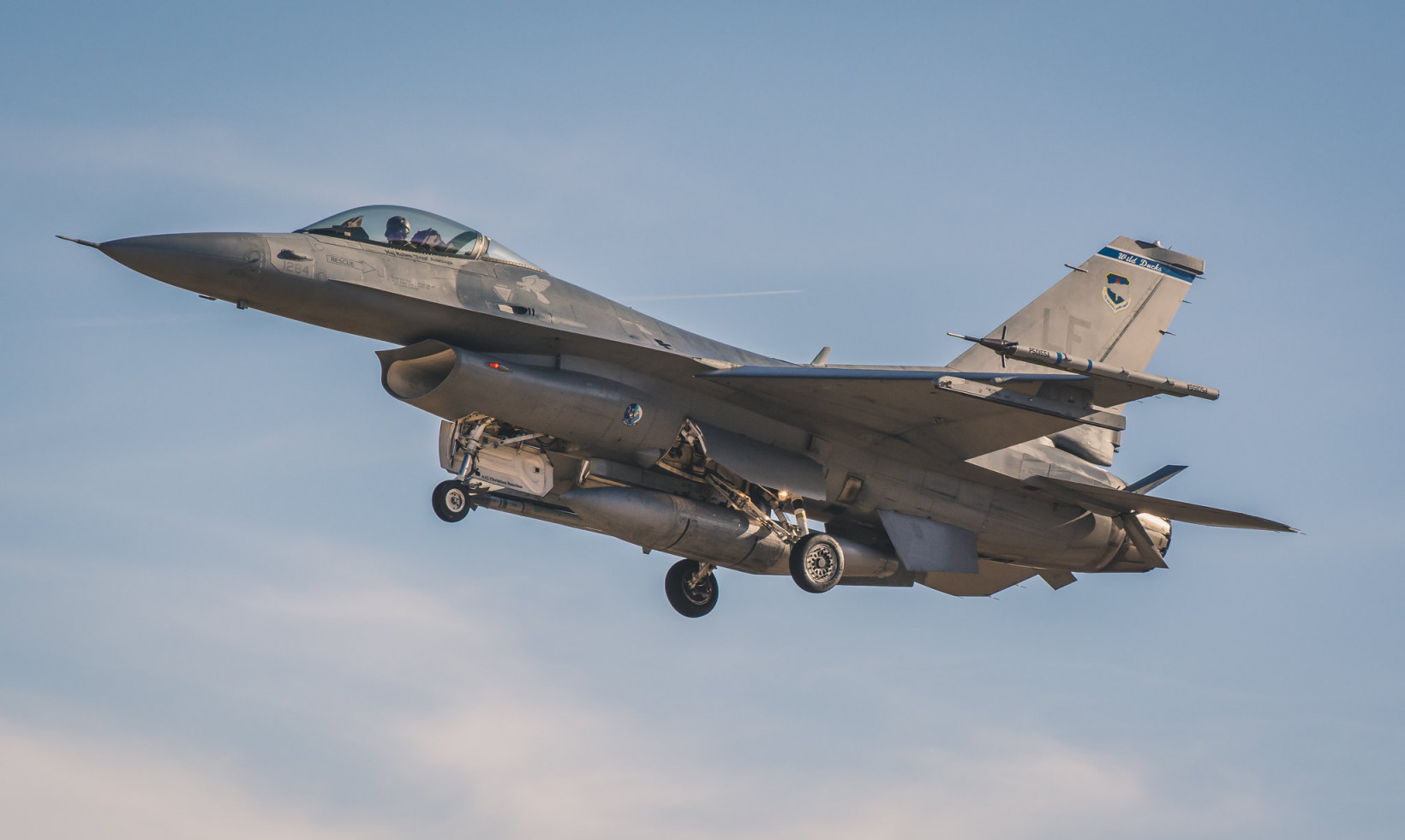We’ve already seen AI conquer masters of chess, Go, and StarCraft II. But could it defeat an Air Force pilot in a (virtual) dogfight?
DARPA has spent the last year trying to answer that question, through an aerial warfare contest called the AlphaDogfight Trials.
The Pentagon’s “mad science” unit created the competition to assess how AI could assist pilots, and attract developers to its Air Combat Evolution (ACE) program. But before the algorithms could enter the cockpit, they had to earn the trust of their human comrades.
“Warfighters trust things that work, and this contest is the first step along the road to trusting this new kind of autonomy,” said ACE Program Manager Colonel Dan “Animal” Javorsek.
[Read: The Pentagon wants game devs to help build AI fighter jets]
Eight teams duked it out in the initial tournament, which was won by an algorithm developed by Heron Systems. The Maryland-based company guided its jet with deep reinforcement learning, which helps AI improve its decisions by testing out different approaches and learning from its mistakes.
Yesterday, Heron faced its final challenge: a best-of-five aerial duel against an Air Force F-16 pilot known as “Banger.”

“I think that this is gonna be a really close fight,” said co-commentator Justin “Glock” Mock.
But his prediction soon looked doomed.
The final dogfight
Heron quickly built up a 4-0 lead. Gunned down four times but somehow still alive, Banger had no choice but to change up his gameplan.
“The standard things that we do as fighter pilots are not working, so for this last one, I’ll try to change it up a little bit just to see if we can do something different,” he said.
“That initial turn is where I lose a lot of life… I’ve just gotta look for opportunities to minimize that distance separation away from the adversary, try to get him back in so I press inside or stay outside his nose area.”
Banger pulled up to 9Gs — nine times the force of gravity — and hit speeds over 500mph. He then dropped the jet down to 13,000 feet, trying to drag Heron close to the ground. The plan seemed to be working. Heron couldn’t get its gun low enough to shoot.
But within a few seconds, the AI was back on Banger’s tail. Lead commentator Chris “Disco” Demay called the action:
Just inside of 3,000 feet… Looks like Heron’s saddling up — and with the kill.
Ready for combat?
DARPA plans to translate the lessons from the AlphaDogfight Trials to the real world. But don’t expect AI to be shooting planes out the sky any time soon.
In a simulation, a machine has perfect information. But that doesn’t exist in the fog of war. As Animal put it: “Modeling and simulation is doomed to succeed.”
The AI could have been “latching onto some weird digital artifact that we weren’t thinking about or considering, and that’s what was giving them an advantage,” he added. “There were certainly some peculiar behaviors in the engagement.”
In addition, the rules-based nature of dogfights is a good fit for AI.
No surprise here- dogfighting is extremely rules based, whoever can fly the longest on the edge of the maneuvering envelop wins. Humans had no chance. When the AI in the plane can consistently discriminate between combatants and non-combatants, call me https://t.co/d69yUjuFaL https://t.co/rp81Q6NZ5g
— Missy Cummings (@missy_cummings) August 20, 2020
The contest was also staged on an outdated battlefield, as dogfights are far more common in movies than in real-life these days. But if you can’t wait till the Top Gun sequel for some aerial combat, you can catch a replay of the battles in the video below, timestamped at just before take-off for your viewing pleasure.
So you like our media brand Neural? You should join our Neural event track at TNW2020, where you’ll hear how artificial intelligence is transforming industries and businesses.
Get the TNW newsletter
Get the most important tech news in your inbox each week.






